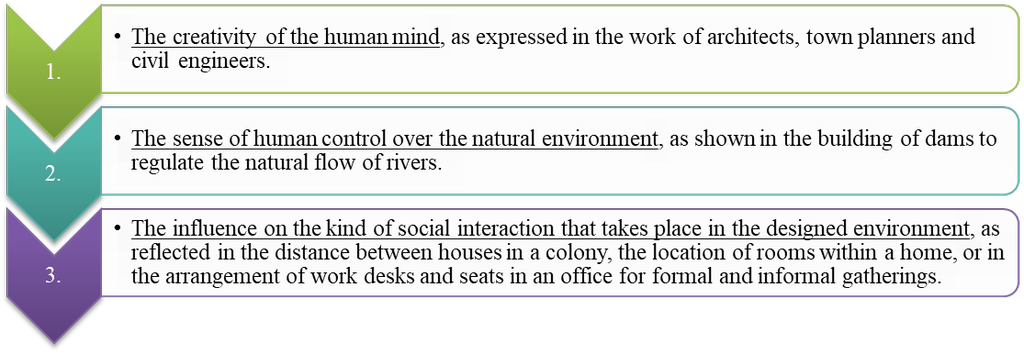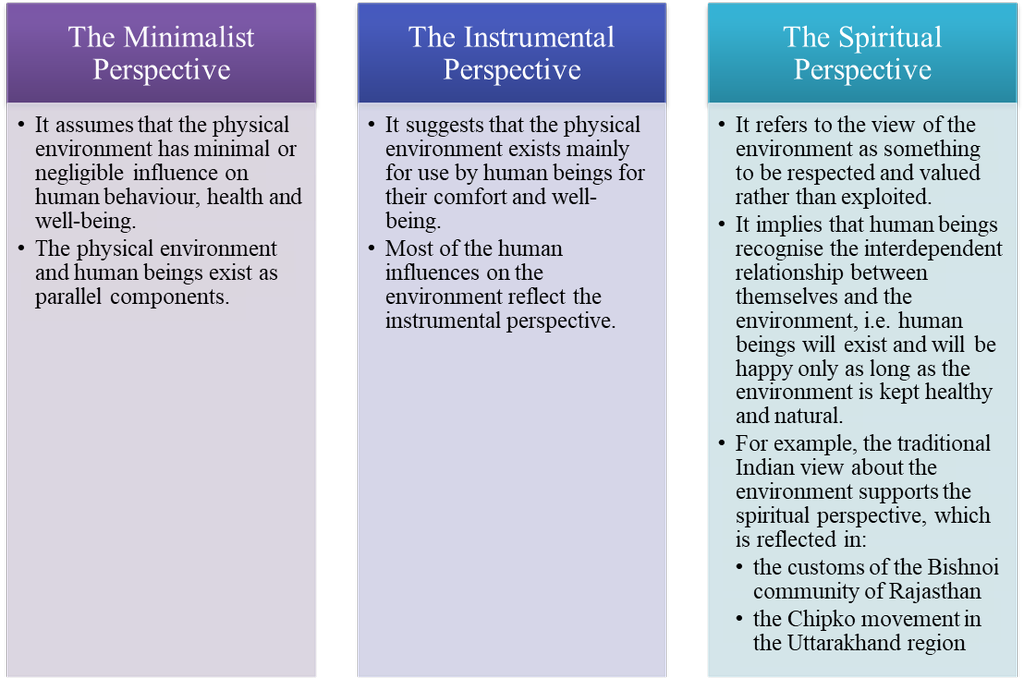- Books Name
- Psychology Book Class-12
- Publication
- PathSet Publications
- Course
- CBSE Class 12
- Subject
- Psychology
Human-Environment Relationship
- The relationship between human behaviour and the environment plays a special role in our lives.
- Environmental problems such as noise, air, water and soil pollution, and unsatisfactory ways of garbage disposal have damaging effects on physical health. These forms of pollution, along with many other hidden factors in the environment, influence psychological health and functioning as well.
- A branch of psychology called environmental psychology deals with various psychological issues pertaining to the human-environment interaction in a very broad sense of the term.
- ‘Environment’ refers to all that is around us, literally everything that surrounds us, including the physical, social, work, and cultural environment.
It includes all the forces outside human beings to which they respond in some way.
- ‘Ecology’ is the study of the relationships between living beings and their environment.
- In psychology, focus is on the interdependence between the environment and people, as the environment becomes meaningful with reference to the human beings who live in it.
- Natural environment is that part of nature which remains untouched by human hand.
- Built environment is that part of nature which has been created by human beings within the natural environment. For example, cities, houses, offices, factories, bridges, shopping malls, railway tracks, roads, dams, and even artificially created parks and ponds, which show how human beings have made changes in the environment given by nature.
- The built environment usually involves the concept of ‘environmental design’.
- The idea of ‘design’ contains some psychological features, such as:

- Different Views of the Human-Environment Relationship
A psychologist named Stokols (1990) describes three approaches that may be adopted to describe the human-environment relationship:


 PathSet Publications
PathSet Publications
